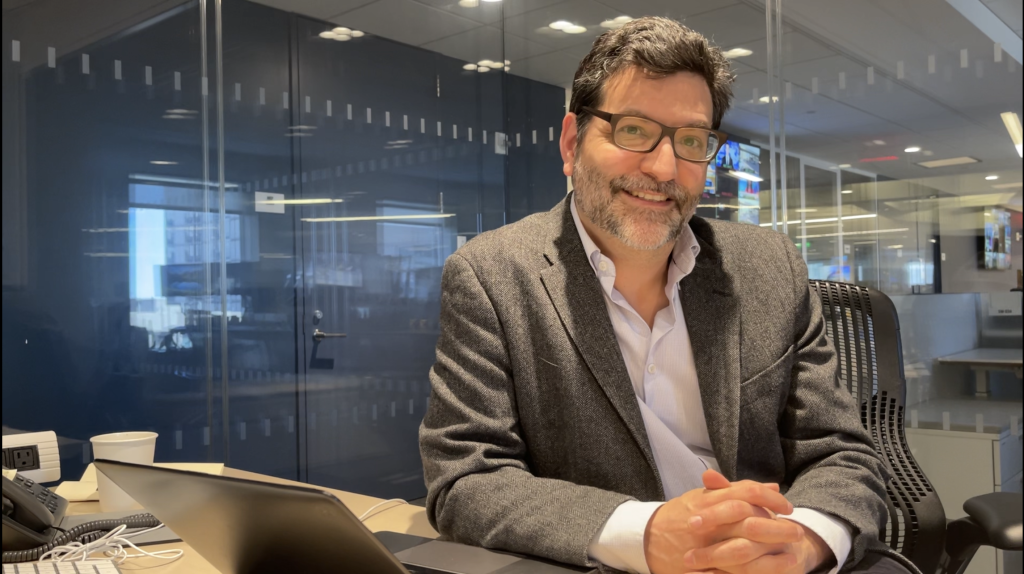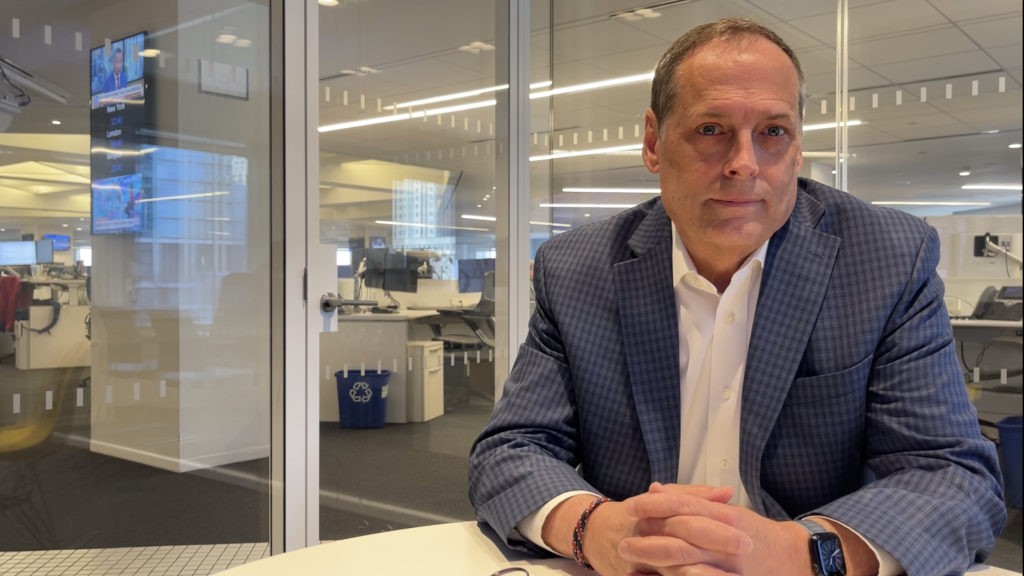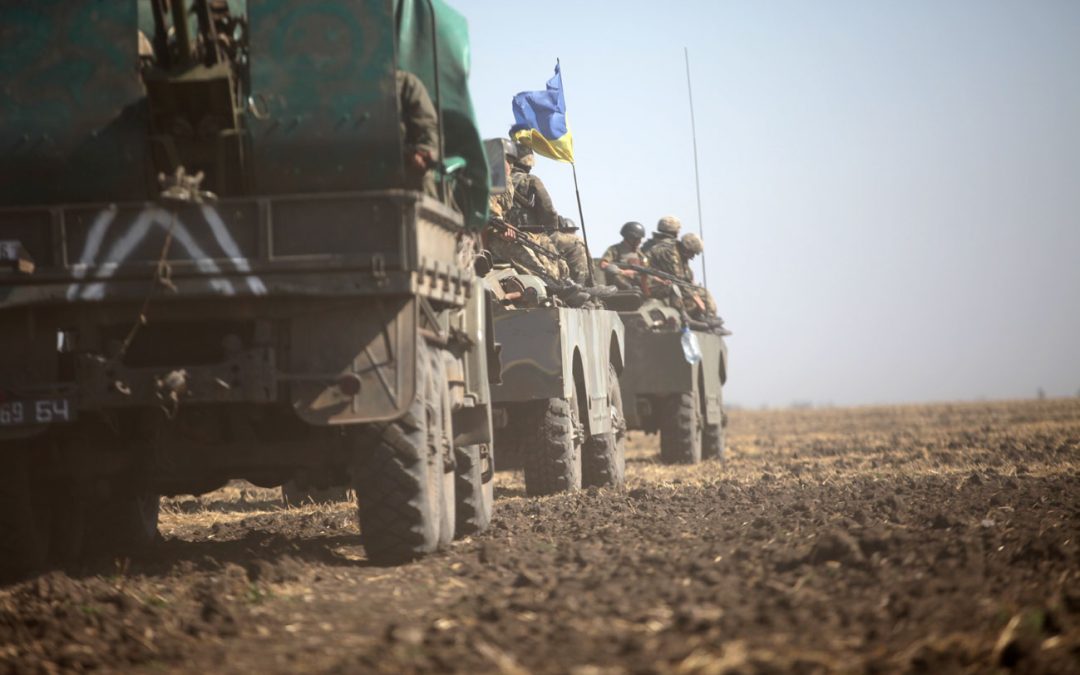“You picked the right day to come to see us!” said Paul Haven as he welcomed me into his office on the fifth floor of The Associated Press newsroom in the heart of Manhattan. Earlier, during the AP’s global editorial meeting attended by the WPI fellows, Haven congratulated his teams on interviewing Ukrainian President Volodymyr Zelenskyy and accompanying him for 48 hours as he traveled across Ukraine. Never before, since the start of the war in February 2022, had one of the international media spent that much time with the Ukrainian leader.
Haven, who has been the AP’s vice president and head of global news gathering since 2022, confesses to be thrilled by the access the AP had to the Ukrainian president. It might be explained, according to Haven, by the trust in the AP coverage of Ukraine that might have caught Zelenskyy’s attention.
Since the start of the war the AP has been covering the conflict extensively. Some of the journalists are rotating from the United States and others are coming from different parts of the world. “We have people risking their lives to tell this story,” says Haven. “We are very, very proud of our coverage, and I feel like this [the Zelenskyy interview] is a bit of a capstone on a year of some of the best coverage that this news organization has done in its entire history, which is a lot of pretty great coverage.”
 Paul Haven in his office (Photo: Tarek KAI)
Paul Haven in his office (Photo: Tarek KAI)
Among the other coverage that Haven recalls was when three AP journalists managed to document during 20 days the Russian invasion of the strategic eastern port city of Mariupol in March 2022. “We were alone for almost three weeks. The world just would not have known what happened, had our journalists not been there,” he says.
Journalist Mstyslav Chernov and his colleagues, photographer Evgeniy Maloletka and producer Vasilisa Stepanenko, were the only three journalists to witness and to document the death and the destruction to which Mariupol was subjected by the Russian Army. AP’s team had to hide in a hospital before being extracted by Ukrainian military outside Mariupol so they could tell the world what was happening in the besieged city.
Like any journalists who are covering the conflict, AP’s reporters face numerous challenges, from editorial difficulties like writing contextual stories and being in the right place at the right time, to safety and security issues.
“There is no doubt about it. It’s about as hard an assignment as you can get,” says Haven. “And even those who have covered wars — and we have many experienced people — have said that this is one of the hardest things they have ever had to do.”
But for the AP’s Ukrainian journalists who are covering the conflict, the duty is even harder, according to David Ake, director of photography at The Associated Press. He explains: “I think it is particularly difficult for photographers who are covering stories in their own space. They live in the place where they are working. So it is very hard for them to separate their personal and professional because it is just, there is no escape.”
 David Ake in the AP’s newsroom (Photo: Tarek KAI)
David Ake in the AP’s newsroom (Photo: Tarek KAI)
Contrary to what some people would think about visual journalists who through the lenses of their cameras would be emotionally protected from the horrors they are witnessing, Ake considers they would definitely be affected. “It is after the fact when you realize what you’ve photographed and seen that it becomes sometimes haunting for you, and then you need some emotional support. Sometimes it is months and months later.”
This is what many journalists have experienced in Bucha, for instance. This small city, on the outskirts of the capital Kyiv, has become a synonym for massacres committed by the Russian army against Ukrainian citizens at the start of the war. Bodies of civilians in the streets, some shot in the head and others with their hands tied behind their backs, circulated everywhere. How did AP’s journalists deal with such atrocities?
“Your goal as a journalist is to show the world what happened there,” says David Ake. “But you do not want to make some photos that strip away that human being’s dignity, the dignity of the people who have died. That is the difficulty you have with war dead. It’s about that real fine line….”
Back then, Russia dismissed these images by calling them a hoax. Such accusations have been addressed to Ukrainian authorities and to journalists alike. With the spread of such fake news and misinformation, the role of the journalist as a key witness becomes even more important.
“It is incredibly important,” says Paul Haven. “I think we are giving the world the facts. I think we are helping the world, world leaders and world society make decisions about how to deal with this threat. What they do with that is up to them. But I think it’s absolutely vitally important.”

